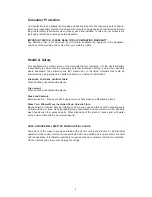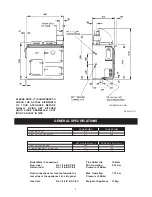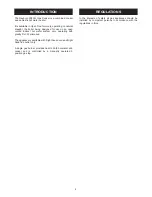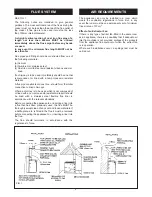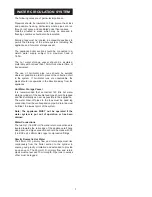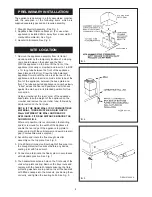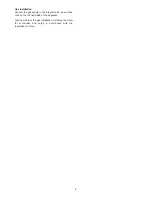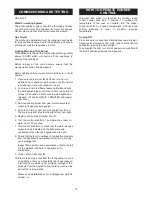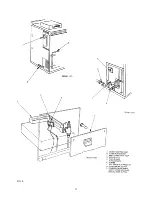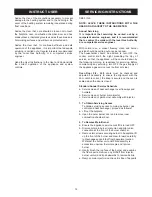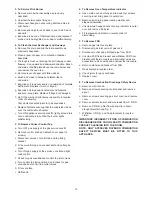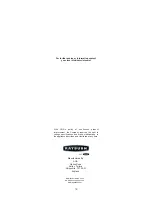
The following notes are of particular importance:-
Pipework should be insulated to help prevent heat loss
and possible freezing, particularly where pipes are run
through roof space and ventilated under floor spaces.
Cisterns situated in areas which may be exposed to
freezing conditions should also be insulated.
Draining taps must be located in accessible positions to
permit the draining of the whole system. Including the
appliance and hot water storage vessel.
The appliance boiler section should be connected to a
cistern water supply, subject to a maximum head of
18.0m.
The hot water storage vessel should be insulated,
preferably, with not less than 75mm thick mineral fibre, or
its equivalent.
The use of horizontal pipe runs should be avoided
wherever possible in order to prevent the collection of air
in the system. If horizontal runs are unavoidable, the
pipes should rise upwards in the direction away from the
appliance.
Hot Water Storage Vessel
It is recommended that an indirect 140 litre hot water
storage cylinder of the double feed type should be lagged
and fixed vertically as near as possible to the appliance.
The water draw-off pipes to the taps must be dead leg
connection from the vent/expansion pipe. A drain tap must
be fitted t the lowest point of the system.
Note: The appliance MUST not be operated if the
water system is put out of operation or has been
drained.
Water Connections
The two Rp1 (1in BSP int) flow and return connections are
located towards the rear edge of the appliance left hand
side panel, and pipe connections should be made with R1
(1in BSP ext) x 28mm dia copper compression fittings.
Gravity Domestic Hot Water
The 28mm O.D. primary flow and return pipe must rise
continuously from the boiler section to the cylinder to
ensure good gravity circulation and extended to provide
an open vent. The 28mm O.D. primary flow and return
pipes must not exceed 10m in length. Pipe runs in excess
of 5m must be lagged.
7
WATER CIRCULATION SYSTEM


